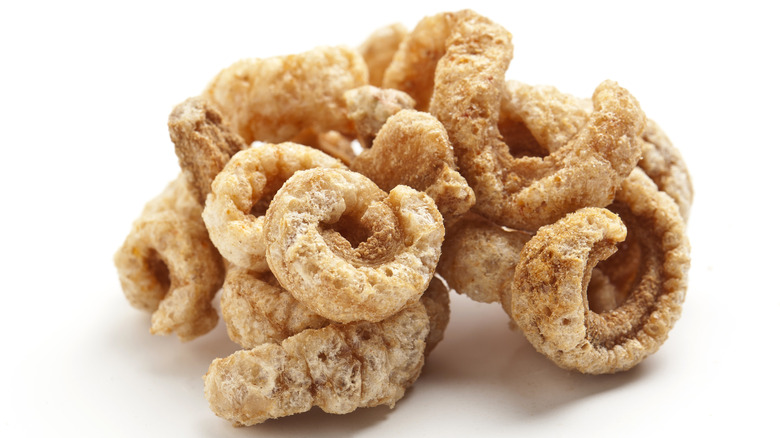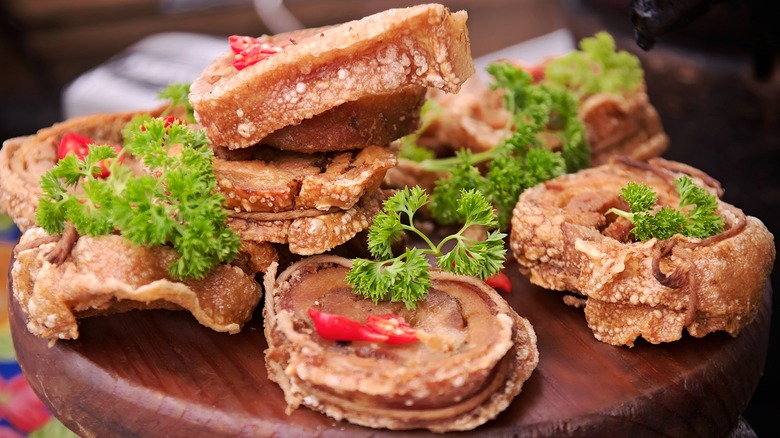Is There A Difference Between Pork Rinds And Chicharróns?
Pork rinds, chicharróns, pork scratchings, cracklins — pork skin chips go by a surprising number of names. But, are they all the same? No matter what they're called, these salty snacks all refer to dehydrated pork skin that's deep fried, boiled, roasted, or rendered until puffing up into golden crispy chips. One big difference simply relies on geography: Pork rinds are more of a U.S. treat whereas chicharróns are a global goodie.
Found at gas stations and vending machines across America, alongside potato chips and cheetos, pork rinds are prepared by boiling pork skins in water. After several hours of chilling, the process causes the fat to separate, leaving behind the crispy morsels. In recent years, pork rinds have managed to ditch their branding as a junk food and have re-emerged in popularity among those that follow a low-carb, keto diet thanks to their high-protein content.
In the United States, pork rind recipes have popped up all over, especially in the south. Down in Louisiana, they call 'em cracklins or cracklings. This Cajun-style spin gets prepared through a process called rendering where hog back fat or pork belly is added to hot oil. Slow-cooked pieces of pork begin to crisp up after about an hour of simmering.
Cracklins aren't the only style of pork skin chips served in the southern part of the country, renowned for comfort foods. A similar treat called fatback or lardons gets cooked up for special occasions, like holidays or funerals. It's prepared by frying a particular cut of pork and serving immediately, while still piping hot.
Other parts of the world know them as chicharróns
In Spain, people have been eating their version of crispy pork for centuries. Here, they're called chicharróns. Spanish sailors brought them over from the old world, and today, they persist as a beloved, bite-sized treat throughout Spanish-speaking countries in Central and South America. There's another version in the Philippines, too, accompanied with a vinegar dipping sauce or added as a crunchy topping for rice dishes.
To make chicharróns, pork skin is smoked and dried to infuse more flavors. Then there's a rendering process to remove extra fat. The result: crispy, golden pork bites perfect for salsas and dips. Or, sprinkled on salads or tacos where they add that perfect layer of crunch. Chicharróns come in other varieties too, sometimes made with beef, mutton, or pork belly, each offering their own unique flavor profile.
Other cultures around the world have their own styles and techniques for making pork skin snacks. Pubs in the United Kingdom call them pork scratchings, the perfect pairing to go with a cold pint. The Brits add their own twist by baking them in the oven. In Thailand, residents refer to deep-fried pork skin as kap moo and serve it up with a spicy green chili sauce made of shallots, cilantro, garlic, and green chilies. Who knew such a little treat could come in so many varieties?


